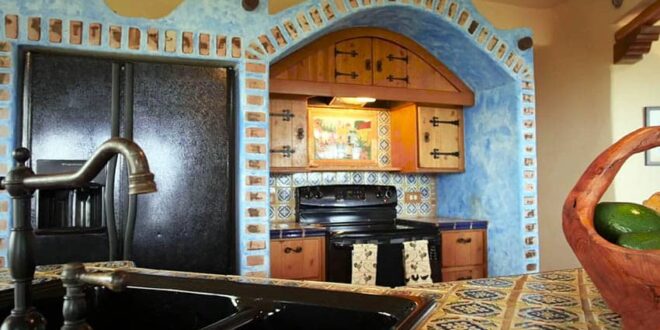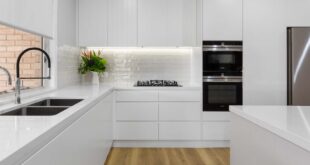Embrace the Warmth: Exploring Spanish Tile Kitchen Design
Dreaming of a kitchen that exudes warmth, character, and a touch of Mediterranean charm? Look no further than Spanish tile kitchen design! It’s not just about aesthetics; it’s about creating a space that feels inviting, lived-in, and utterly unique. Spanish tile, with its rich history, vibrant colors, and diverse patterns, offers a remarkable canvas for expressing your personal style and transforming your kitchen into a culinary haven. From rustic farmhouse kitchens to modern minimalist spaces, Spanish tile seamlessly adapts to various design aesthetics, bringing a touch of sun-soaked elegance to any home.
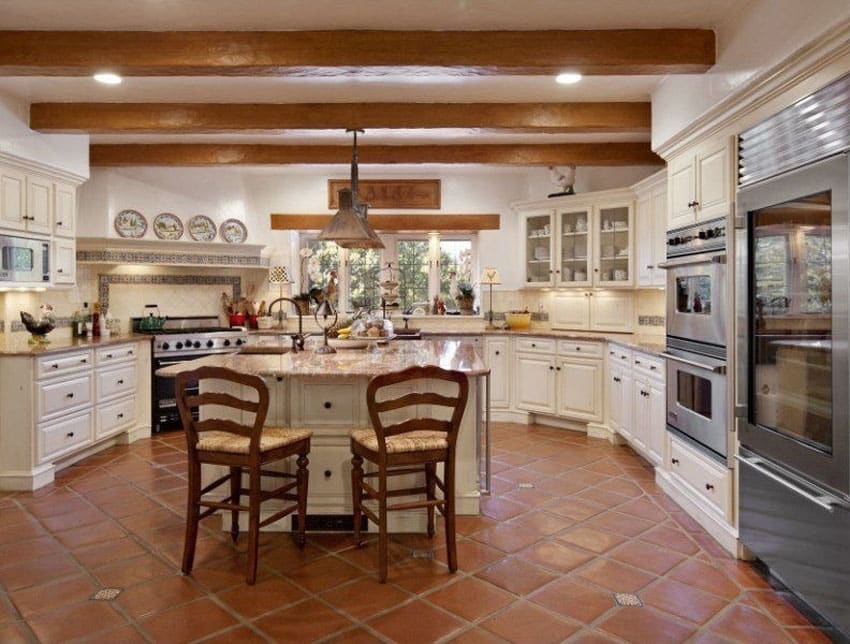
But what exactly makes Spanish tile so special? What are the key elements of Spanish tile kitchen design? And how can you incorporate this timeless style into your own home? Let’s dive into the captivating world of Spanish tile and unlock the secrets to creating a kitchen that is both beautiful and functional.
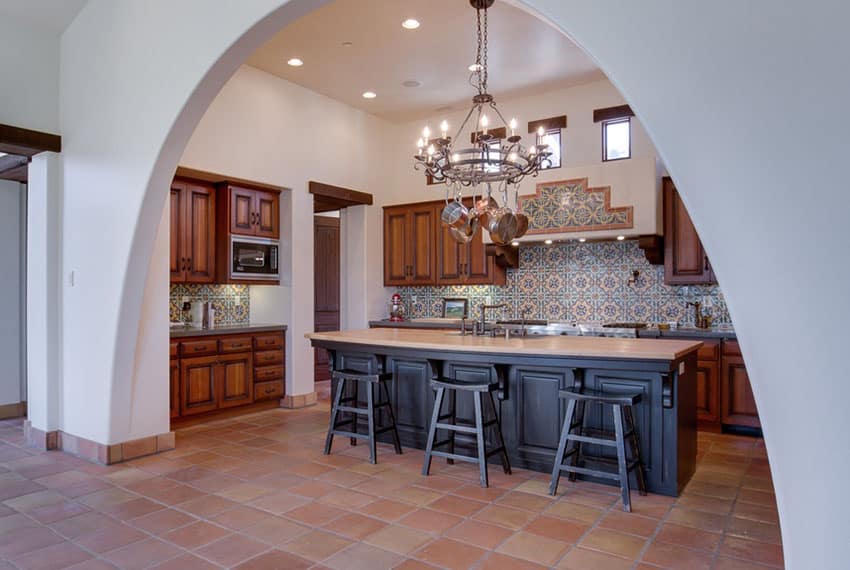
A Journey Through History: The Roots of Spanish Tile
To truly appreciate Spanish tile, it’s essential to understand its rich history. The art of tile making in Spain dates back centuries, influenced by various cultures including the Moors, Romans, and Visigoths. Each civilization left its mark, contributing to the unique styles and techniques that define Spanish tile today.
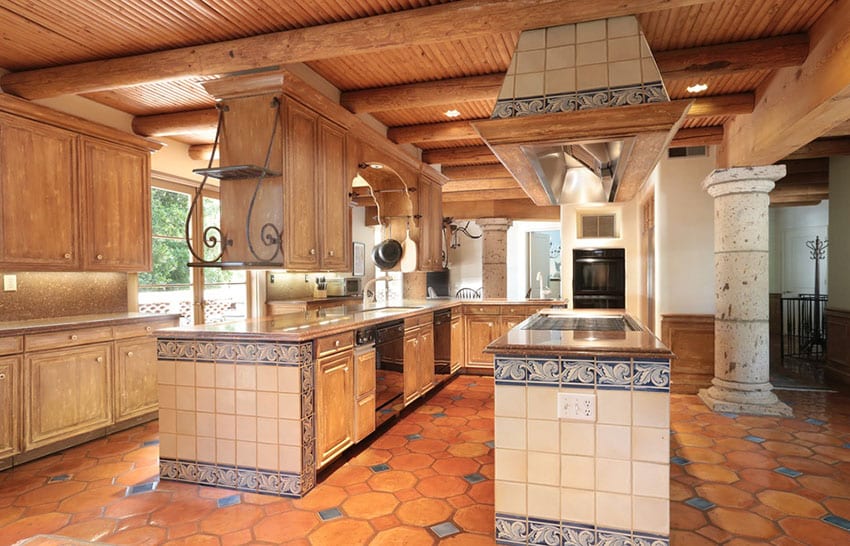
The iconic glazed ceramic tiles, known as ‘azulejos,’ are perhaps the most recognizable form of Spanish tile. These tiles, often adorned with intricate geometric patterns and vibrant colors, were initially used to decorate palaces and religious buildings. Over time, they found their way into homes, becoming a symbol of Spanish artistry and craftsmanship. The influence of Moorish design is particularly evident in the geometric patterns and the use of rich colors like blue, green, and yellow.
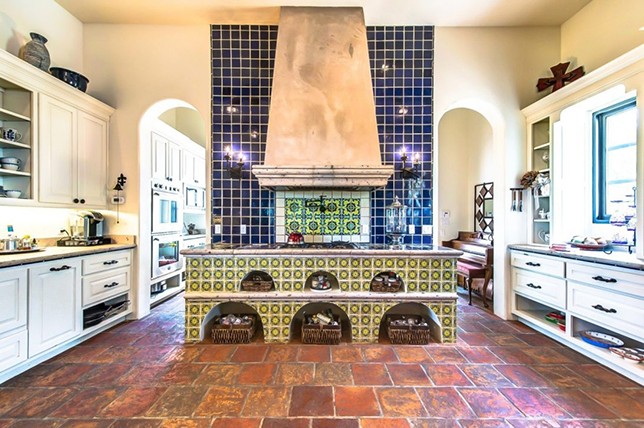
Beyond azulejos, Spanish tile also encompasses terracotta tiles, which are made from baked clay. These tiles offer a more rustic and earthy aesthetic, perfect for creating a warm and inviting atmosphere. Terracotta tiles are often used for flooring, backsplashes, and even countertops, adding a touch of natural beauty to the kitchen.
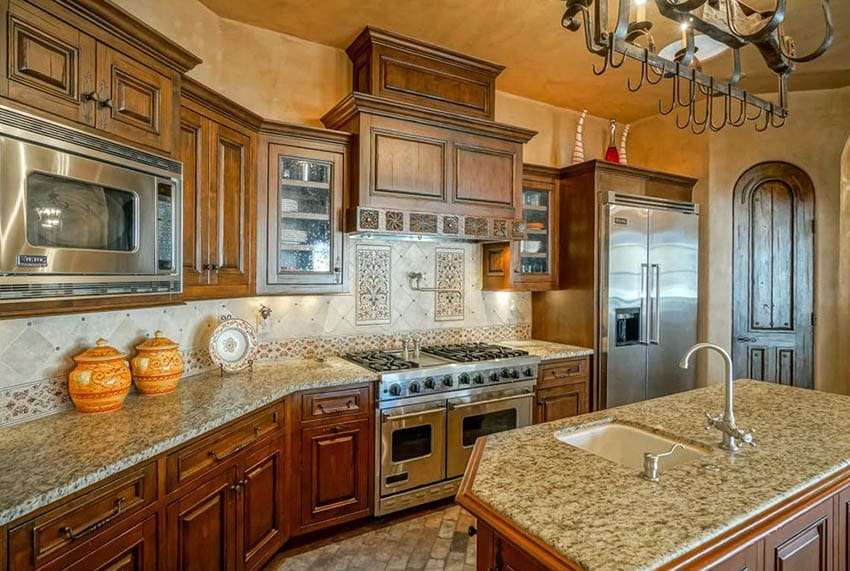
Key Elements of Spanish Tile Kitchen Design
Spanish tile kitchen design is more than just using Spanish tiles; it’s about creating a cohesive and harmonious space that embodies the spirit of Spanish culture. Here are some key elements to consider when designing your Spanish tile kitchen:
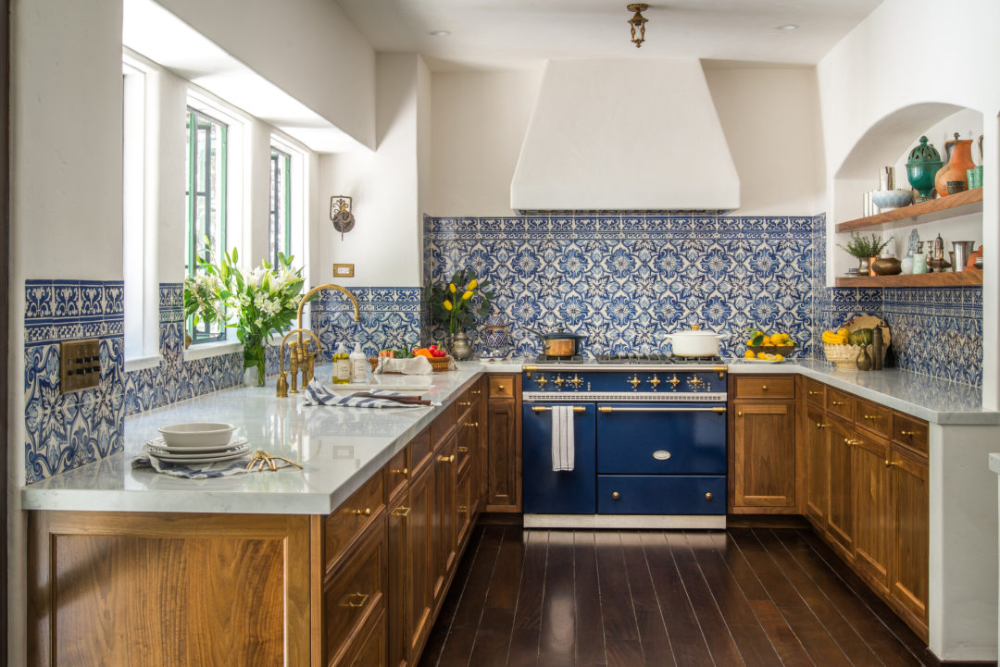
- Color Palette: Warm and earthy tones are central to Spanish design. Think terracotta, ochre, burnt orange, and shades of brown. Accent colors like deep blue, emerald green, and sunny yellow can add pops of vibrancy and personality. Don’t be afraid to mix and match colors, but strive for a balance that feels harmonious and inviting.
- Tile Patterns: From intricate geometric designs to simple, hand-painted motifs, Spanish tile patterns are incredibly diverse. Consider using a combination of patterns to create visual interest and depth. For example, you might use a patterned tile for the backsplash and a solid-colored tile for the flooring.
- Texture: Spanish tile often features a textured surface, which adds depth and character to the space. Hand-painted tiles, in particular, often have slight imperfections that enhance their rustic charm. Consider incorporating textured tiles for the backsplash or flooring to create a more tactile and visually appealing environment.
- Natural Materials: Spanish design embraces natural materials like wood, stone, and wrought iron. Incorporate these materials into your kitchen design to complement the Spanish tile and create a cohesive look. For example, you might use wooden cabinets, stone countertops, or wrought iron light fixtures.
- Rustic Finishes: Embrace imperfections and rustic finishes to create a kitchen that feels lived-in and authentic. Distressed wood, aged metal, and hand-painted details all contribute to the overall charm of Spanish design.
- Open Shelving: Open shelving is a great way to showcase your beautiful dishes, cookware, and decorative items. Consider using open shelving to display colorful pottery, antique serving dishes, or even potted herbs.
- Statement Pieces: Incorporate statement pieces like a large terracotta vase, a hand-painted ceramic bowl, or a wrought iron chandelier to add character and personality to your kitchen.
Types of Spanish Tile for Your Kitchen
Choosing the right type of Spanish tile is crucial for achieving the desired look and feel in your kitchen. Here are some popular options to consider:
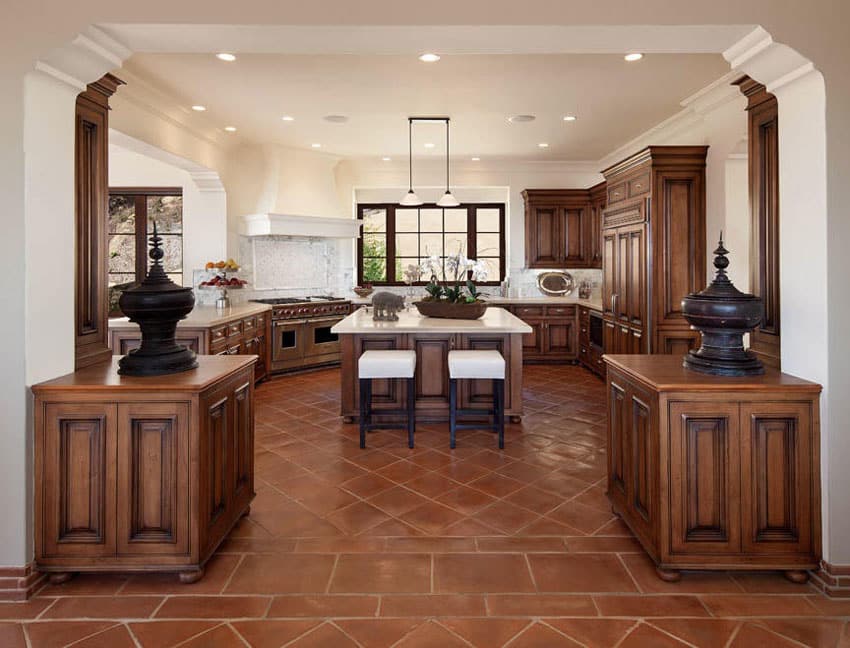
- Azulejos: These glazed ceramic tiles are perfect for creating intricate patterns and adding pops of color to your kitchen. They are commonly used for backsplashes, accent walls, and even countertops.
- Terracotta Tiles: Made from baked clay, terracotta tiles offer a rustic and earthy aesthetic. They are a great choice for flooring, backsplashes, and even countertops, adding warmth and natural beauty to the kitchen. The porous nature of terracotta requires sealing to prevent staining and water damage.
- Hand-Painted Tiles: These tiles are individually painted by hand, making each one unique. They are a great way to add a personal touch to your kitchen and create a truly one-of-a-kind design. Hand-painted tiles are often used for backsplashes or as decorative accents.
- Cement Tiles: Cement tiles are known for their durability and versatility. They are available in a wide range of colors and patterns, making them a great choice for flooring, backsplashes, and even countertops.
- Mosaic Tiles: Mosaic tiles consist of small pieces of tile arranged in a pattern. They are a great way to add intricate detail and visual interest to your kitchen. Mosaic tiles are often used for backsplashes or as decorative accents.
- Saltillo Tiles: A type of terracotta tile, Saltillo tiles are known for their rustic appearance and warm color variations. These tiles are traditionally handmade in Saltillo, Mexico. Their color variations are a natural characteristic of the clay and the firing process.
Incorporating Spanish Tile into Different Kitchen Styles
The beauty of Spanish tile is its versatility. It can be seamlessly incorporated into various kitchen styles, from rustic farmhouse to modern minimalist. Here are a few examples:
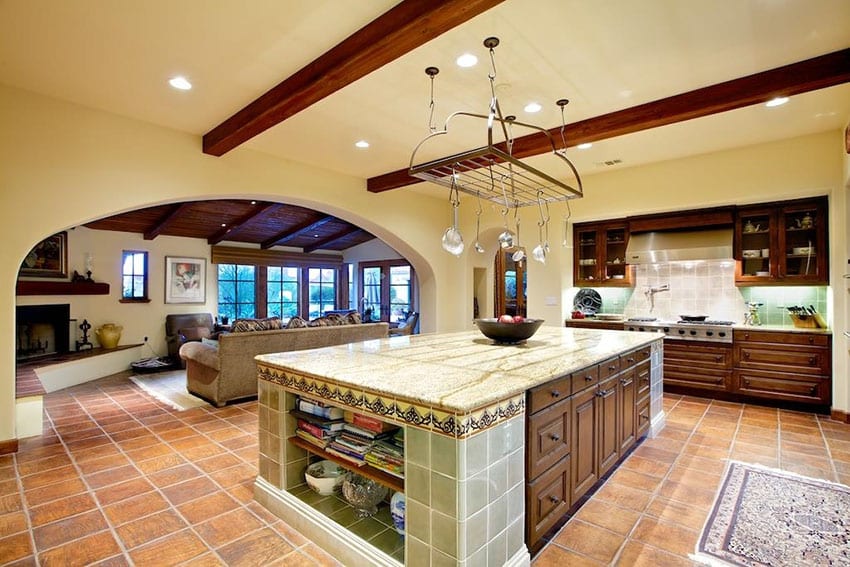
- Rustic Farmhouse Kitchen: Combine terracotta tiles with wooden cabinets, exposed beams, and copper accents to create a warm and inviting farmhouse kitchen. Use hand-painted tiles for the backsplash to add a touch of personality and charm. Think distressed wood finishes and antique hardware to complete the look.
- Modern Spanish Kitchen: Opt for a more minimalist approach by using solid-colored tiles in neutral tones. Pair them with sleek cabinets, stainless steel appliances, and clean lines. Add pops of color with accessories like colorful pottery and artwork.
- Mediterranean Kitchen: Embrace the vibrant colors and intricate patterns of azulejos to create a Mediterranean-inspired kitchen. Combine them with white cabinets, stone countertops, and wrought iron details. Add plants and herbs to bring a touch of nature into the space.
- Tuscan Kitchen: This style blends rustic charm with elegance. Use terracotta tiles, natural stone, and warm wood tones. Incorporate details like a decorative range hood, ornate lighting, and handcrafted pottery.
- Coastal Spanish Kitchen: This style combines the warmth of Spanish design with the light and airy feel of coastal decor. Use lighter colors, such as whites, blues, and greens, along with natural materials like wood and rattan.
Design Ideas and Inspiration: Bringing Your Spanish Tile Kitchen to Life
Ready to start designing your own Spanish tile kitchen? Here are some design ideas and inspiration to get you started:
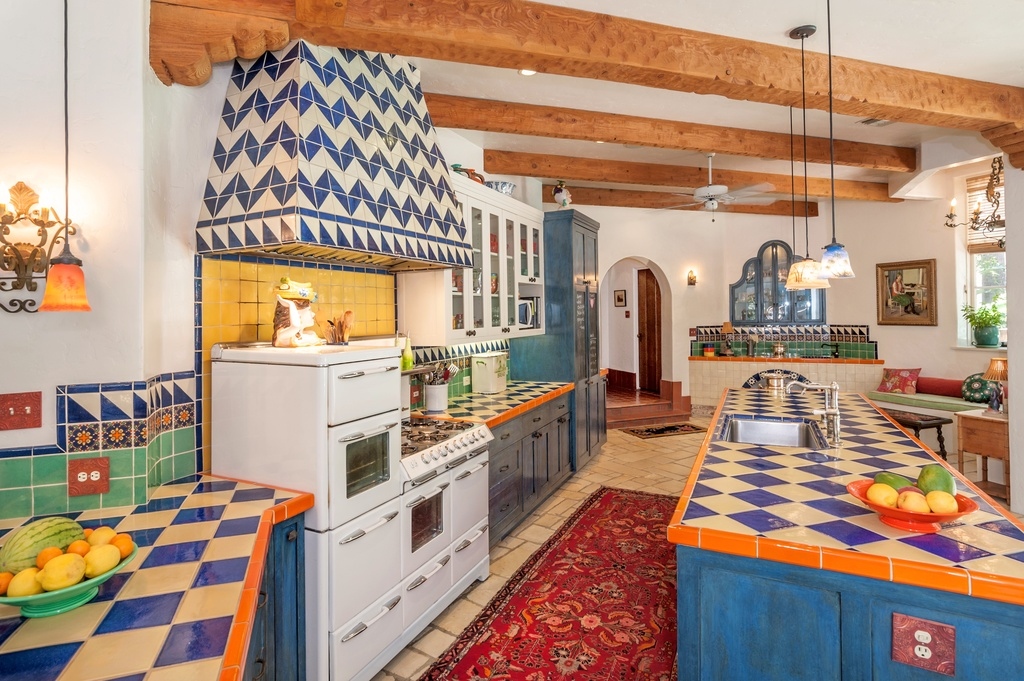
- Backsplash Focal Point: Create a stunning backsplash by using a bold patterned tile or a mosaic design. This will instantly add character and visual interest to your kitchen.
- Statement Flooring: Use terracotta tiles or cement tiles with intricate patterns to create a statement flooring. This will ground the space and add a touch of drama.
- Tile Accents: Use Spanish tile as accents throughout the kitchen. For example, you could use tile to frame a window, create a border around a countertop, or add decorative details to a kitchen island.
- Open Shelving Display: Showcase your beautiful Spanish tile by using open shelving to display colorful pottery, antique serving dishes, or even potted herbs.
- Incorporate Natural Light: Maximize natural light in your kitchen by using large windows and light-colored paint. This will enhance the warmth and vibrancy of the Spanish tile.
- Don’t Be Afraid to Mix and Match: Combine different types of Spanish tile to create a unique and personalized design. Just be sure to choose colors and patterns that complement each other.
- Consider the Grout: The color and type of grout you choose can significantly impact the overall look of your Spanish tile kitchen. For a more rustic look, consider using a darker grout color. For a more modern look, opt for a lighter grout color.
Maintenance and Care: Keeping Your Spanish Tile Looking Its Best
Proper maintenance and care are essential for keeping your Spanish tile looking its best. Here are some tips to follow:
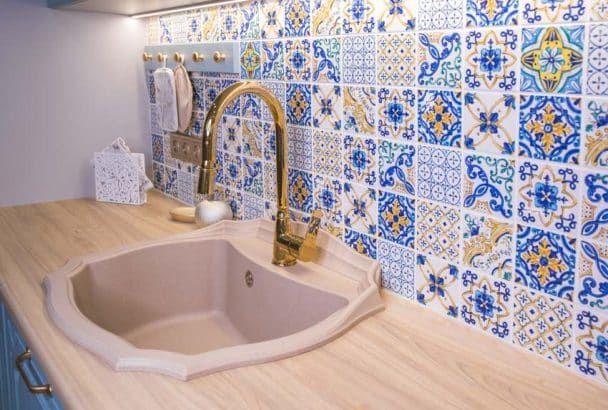
- Regular Cleaning: Clean your Spanish tile regularly with a mild detergent and water. Avoid using harsh chemicals or abrasive cleaners, as they can damage the tile surface.
- Sealing: Seal your Spanish tile, especially terracotta tiles, to protect them from stains and water damage. Reapply sealant every few years, or as needed.
- Grout Cleaning: Clean your grout regularly to prevent it from becoming stained or discolored. Use a grout brush and a grout cleaner to remove dirt and grime.
- Prevent Scratches: Use mats or rugs to protect your Spanish tile flooring from scratches. Avoid wearing shoes with hard soles in the kitchen.
- Repairing Damage: Repair any chips or cracks in your Spanish tile as soon as possible to prevent further damage. You can use a tile repair kit to fill in the cracks and restore the tile surface.
The Cost of Spanish Tile Kitchen Design
The cost of Spanish tile kitchen design can vary depending on several factors, including the type of tile you choose, the size of your kitchen, and the complexity of the installation. Here’s a general overview of the costs involved:
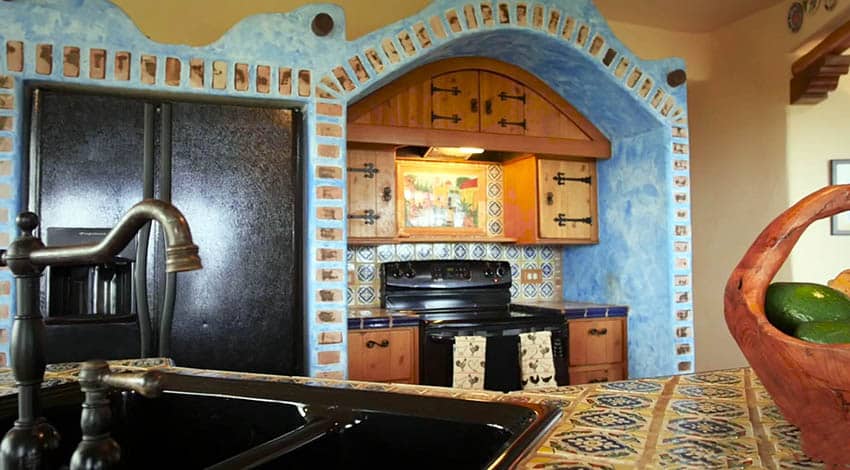
- Tile Cost: The cost of Spanish tile can range from a few dollars per square foot to hundreds of dollars per square foot, depending on the type of tile and the quality. Hand-painted tiles and custom designs will typically be more expensive.
- Installation Cost: The cost of installation can vary depending on the complexity of the project and the experience of the installer. Expect to pay more for intricate patterns or custom designs.
- Material Costs: Other material costs may include grout, sealant, and underlayment.
- Labor Costs: Labor costs will depend on the complexity of the project and the local labor rates.
To get a more accurate estimate of the cost of your Spanish tile kitchen design, it’s best to consult with a professional kitchen designer or contractor.
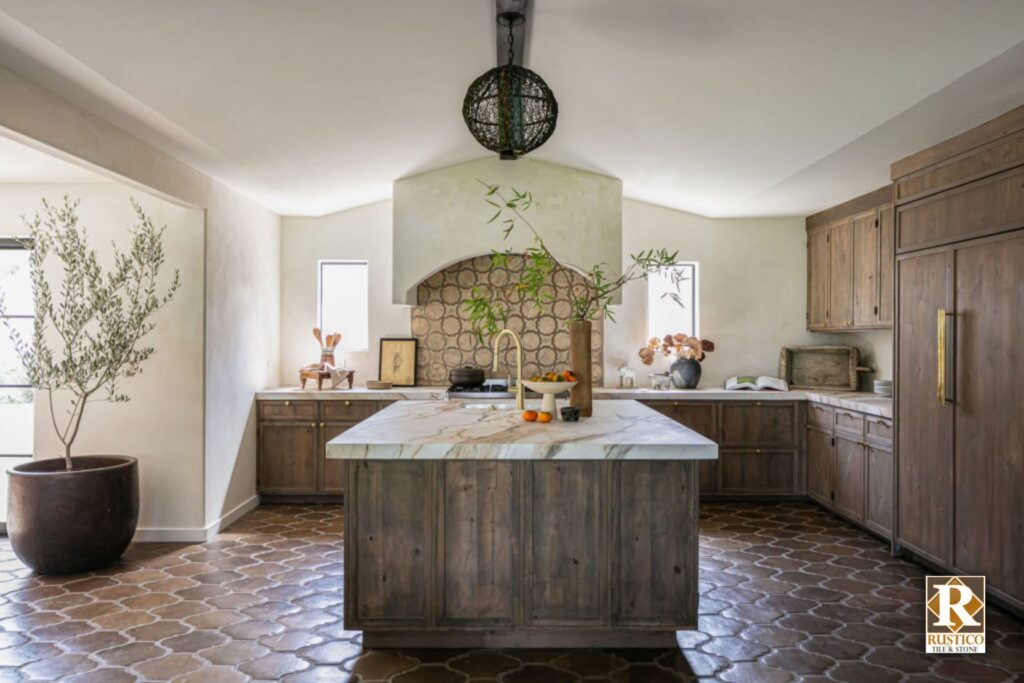
Finding the Right Professionals: Bringing Your Vision to Reality
Implementing a Spanish tile kitchen design requires expertise and attention to detail. Choosing the right professionals is crucial for a successful outcome. Here’s what to consider:
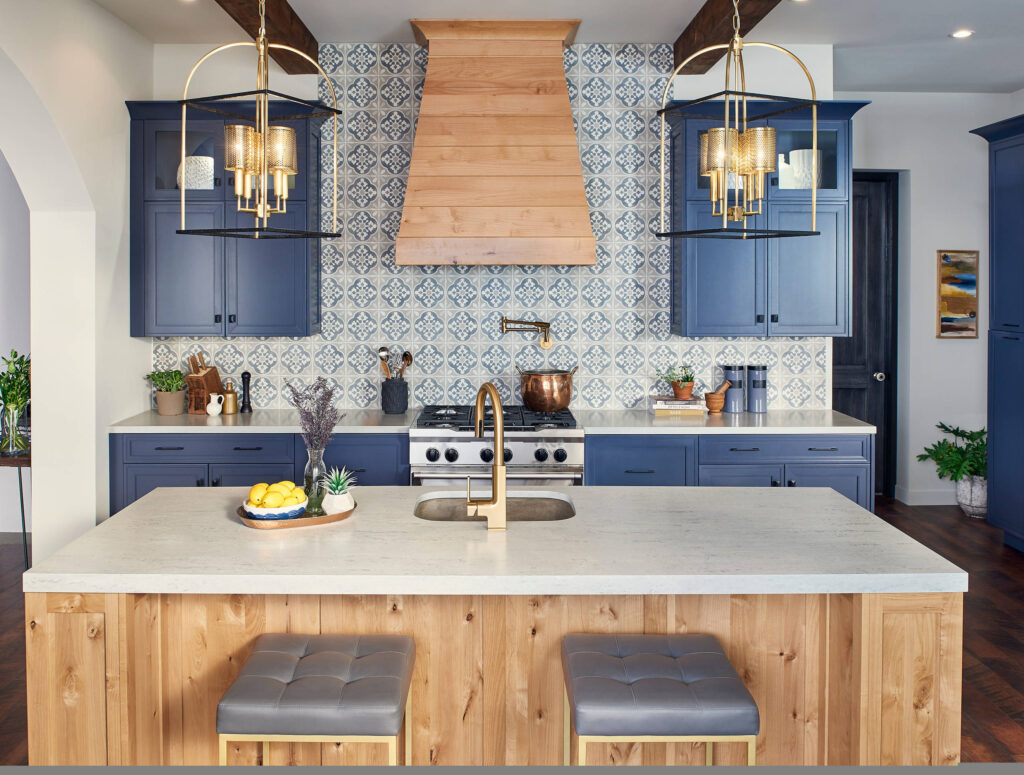
- Kitchen Designer: A skilled kitchen designer can help you plan your space, select the right materials, and create a design that meets your needs and preferences. Look for a designer with experience in Spanish or Mediterranean-style kitchens.
- Tile Installer: An experienced tile installer is essential for ensuring that your Spanish tile is installed correctly and beautifully. Check their portfolio and references to ensure they have the skills and expertise required for the job.
- Contractor: A general contractor can oversee the entire project, coordinating the different trades and ensuring that the work is completed on time and within budget.
Get multiple quotes from different professionals and compare their prices and services before making a decision. Check online reviews and ask for references to ensure you are hiring reputable and qualified professionals.
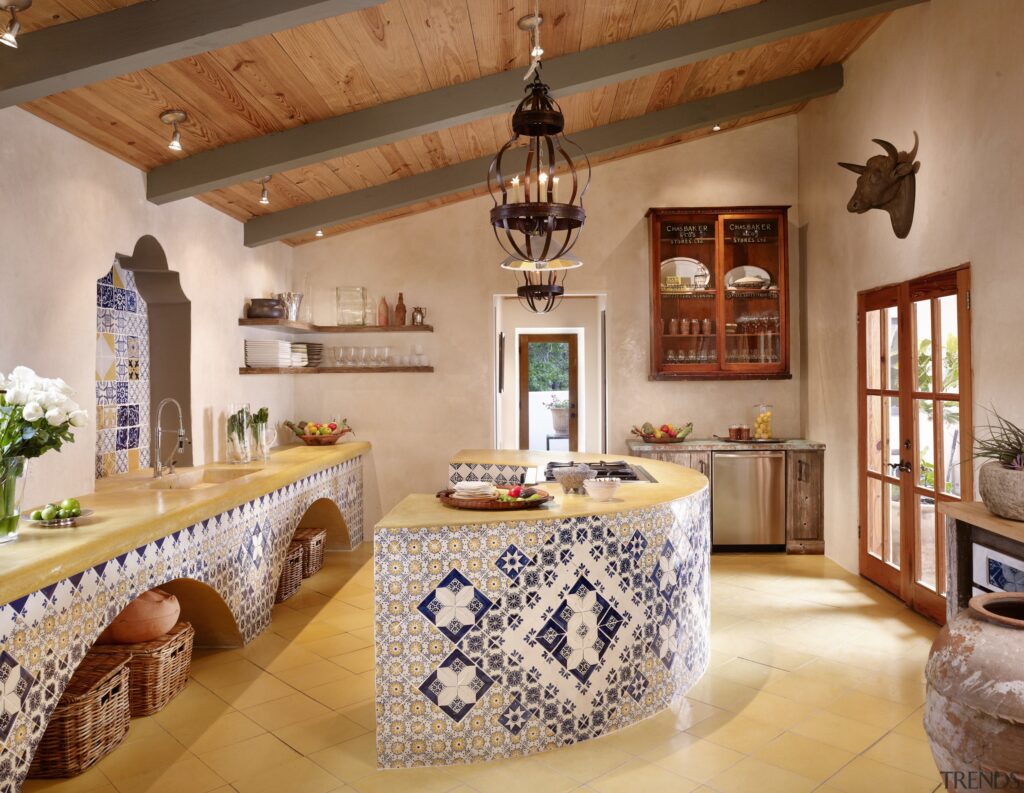
Beyond the Tile: Completing the Spanish Kitchen Aesthetic
While Spanish tile is a cornerstone of the design, the finishing touches truly bring the kitchen to life. Consider these elements to complete your Spanish-inspired space:
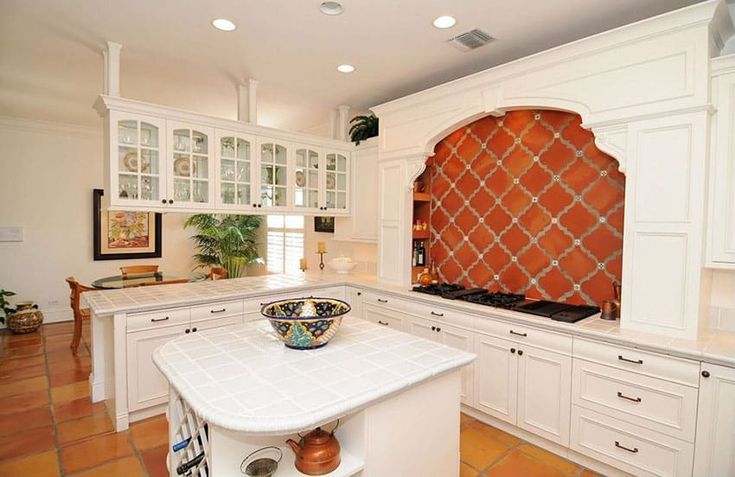
- Cabinetry: Opt for wood cabinets with a natural or distressed finish. Raised panel doors or shaker-style cabinets work well with the Spanish aesthetic.
- Countertops: Natural stone countertops, such as granite or marble, complement the warmth of Spanish tile. Consider a textured or honed finish for a more rustic feel.
- Hardware: Choose hardware with a wrought iron or antique brass finish. Decorative knobs and pulls can add a touch of elegance.
- Lighting: Incorporate warm, ambient lighting with wrought iron chandeliers, sconces, or pendant lights. Under-cabinet lighting can enhance functionality and highlight the backsplash.
- Accessories: Add decorative accessories like colorful pottery, woven baskets, and wrought iron accents to complete the look. Don’t be afraid to add personal touches that reflect your own style.
- Textiles: Use textiles with rich colors and textures, such as woven rugs, embroidered curtains, and patterned cushions, to add warmth and comfort to the space.
Spanish Tile: A Timeless Investment
Investing in Spanish tile for your kitchen is not just about creating a beautiful space; it’s about investing in a timeless design that will last for years to come. Spanish tile is durable, versatile, and adds character and charm to any home. With proper care and maintenance, your Spanish tile kitchen will continue to bring you joy and inspiration for generations.
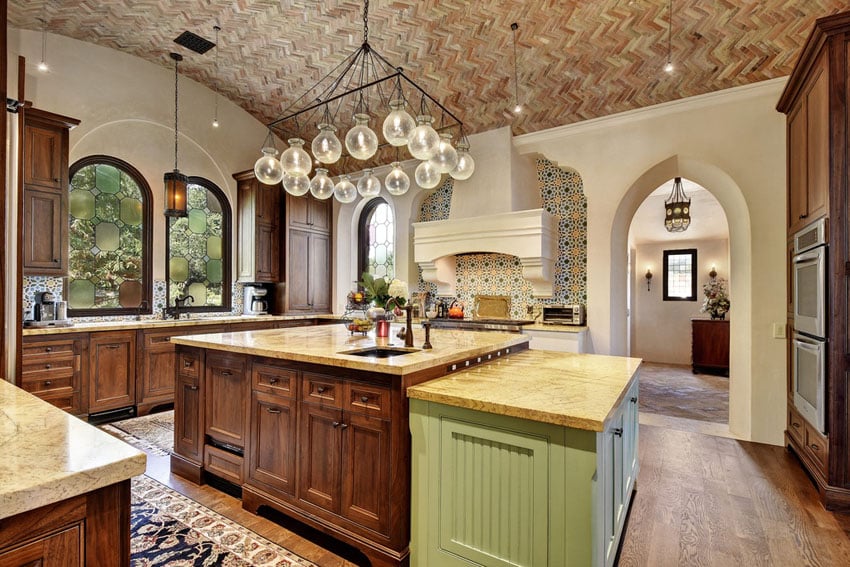
So, embrace the warmth, the history, and the artistry of Spanish tile, and transform your kitchen into a culinary oasis that reflects your unique style and personality. Let the vibrant colors, intricate patterns, and rustic textures transport you to the sun-soaked landscapes of Spain, creating a space where memories are made and culinary dreams come true.
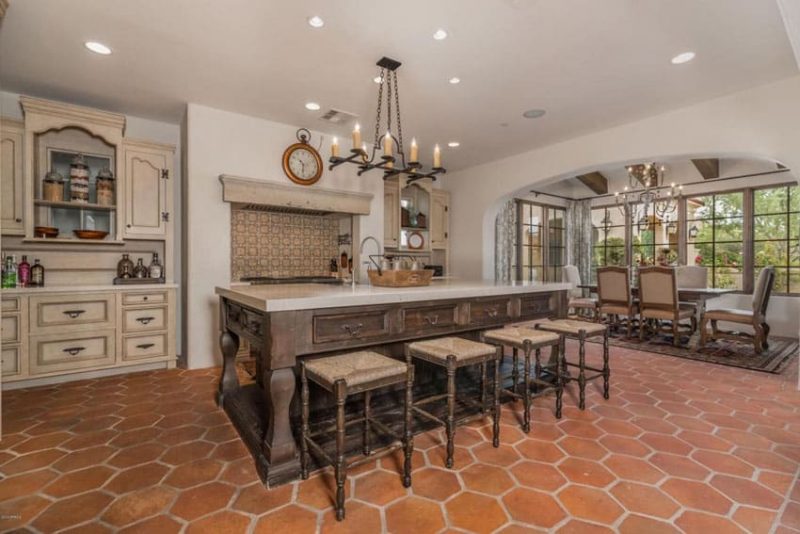
Are you ready to embark on your Spanish tile kitchen design journey? With careful planning, thoughtful design choices, and the help of skilled professionals, you can create a kitchen that is both beautiful and functional, a true reflection of your personal style and a celebration of Spanish artistry.
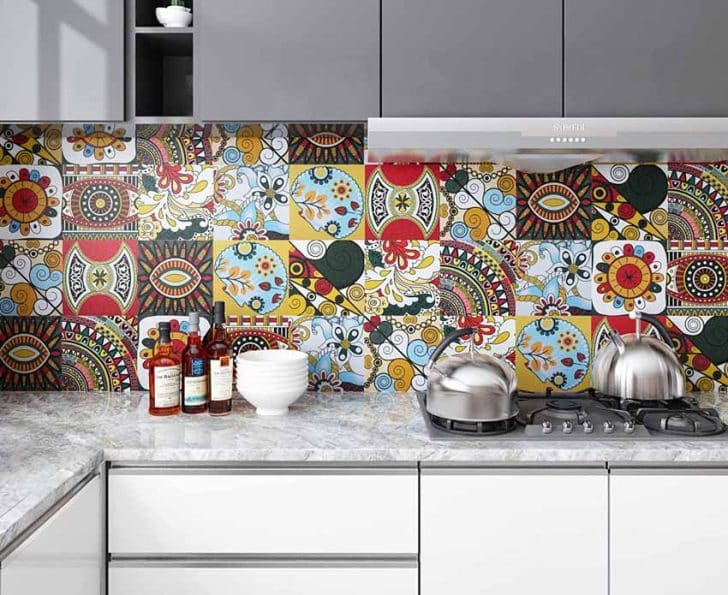
 Nimila
Nimila
